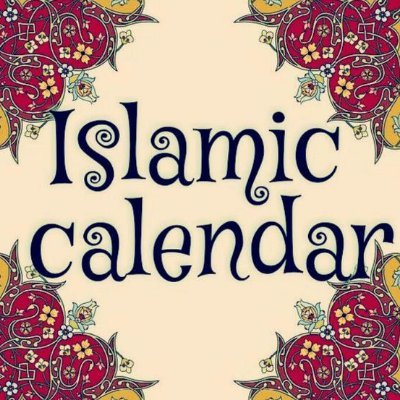All You Wanted to Know About Islamic Calendar
The Islamic Calendar was established 1441 years ago by the second Caliph Omar ibn Khattab. Before that Muslims in their respective provinces, following the Arab tradition of the time, were counting the days and months – with sighting of the new moon and counting the days thereafter without following any particular calendar or dating system.
After the Islamic State spread to new areas beyond the Arab land, the limitation in the system began to surface and the need for a better and accurate calendar was felt.
“The Caliph, the Supreme Head of the Islamic State, was used to issue all the Guidelines and Pronouncements to the Governors of various Islamic Provinces from Madinah. Things were actually working fine”, Rehnuma, a student of Islamic studies, explains.

“But confusion arose when contradictory orders started reaching far away provinces at the same time. Since these orders were not carrying any date, it became very difficult for the Governors to find out which one of the orders was the latest and supposed to be followed with”, she adds.
To overcome the confusion, Caliph Omar finally decided to introduce the Islamic Calendar and asked the people for their opinions and suggestions on the matter.
Months in the Islamic Calendar
1. Muharram
2. Safar
3. Rabi’ al-awwal (Rabi’ I)
4. Rabi’ al-thani (Rabi’ II)
5. Jumada al-awwal (Jumada I)
6. Jumada al-thani (Jumada II)
7. Rajab
8. Sha’ban
9. Ramadan
10. Shawwal
11. Dhu al-Qi’dah
12. Dhu al-Hijjah

Each month starts when the lunar crescent is first seen (by a human observer’s eye) after a new moon. Although new moons may be calculated quite precisely, the actual visibility of the crescent is much more difficult to predict. It depends on factors such as weather, the optical properties of the atmosphere, and the location of the observer. It is therefore very difficult to give accurate information in advance about when a new month will start.
Furthermore, some Muslims depend on a local sighting of the moon, whereas others depend on a sighting by authorities somewhere in the Muslim world. Both are valid Islamic practices, but they may lead to different starting days for the months.
Never print an Islamic calendar in advance! Not a reliable one. However, calendars are printed for planning purposes, but such calendars are based on estimates of the visibility of the lunar crescent, and the actual month may start a day earlier or later than predicted in the printed calendar.
Different methods for estimating the calendars are used. Some sources mention a crude system in which all odd numbered months have 30 days and all even numbered months have 29 days with an extra day added to the last month in ‘leap years’ (a concept otherwise unknown in the calendar). Leap years could then be years in which the number year mod 30 is one of the following: 2, 5, 7, 10, 13, 16, 18, 21, 24, 26, or 29. (This is the algorithm used in the calendar program of the Gnu Emacs editor.)
 Such a calendar would give an average month length of 29.53056 days, which is quite close to the synodic month of 29.53059 days, so on the average it would be quite accurate, but in any given month it is still just a rough estimate. Better algorithms for estimating the visibility of the new moon have been devised.
Such a calendar would give an average month length of 29.53056 days, which is quite close to the synodic month of 29.53059 days, so on the average it would be quite accurate, but in any given month it is still just a rough estimate. Better algorithms for estimating the visibility of the new moon have been devised.
How does one count years? Years are counted since the Hijra, that is, Mohammed’s emigration to Medina in AD 622. On 16 July (Julian calendar) of that year, AH 1 started (AH = Anno Hegirae = year of the Hijra). In the year AD 2003 we have witnessed the start of Islamic year AH 1424.
Note that although only 2003-622=1381 years have passed in the Christian calendar, 1423 years have passed in the Islamic calendar, because its year is consistently shorter (by about 11 days) than the tropical year used by the Christian calendar.
@religionworldin
[video_ads]
[video_ads2]








